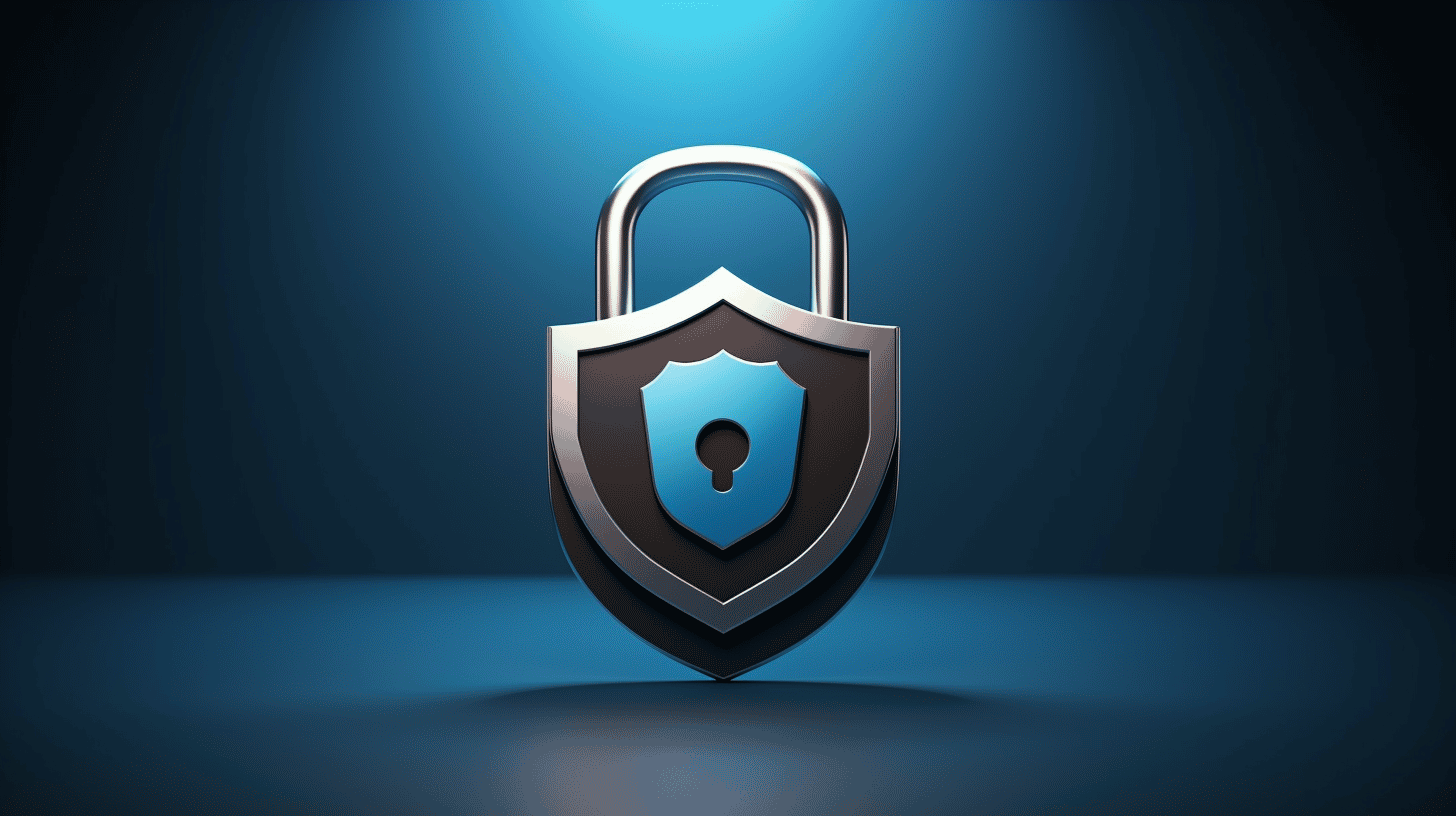在當今的數位環境中,擁有一個安全的網站對於任何企業主都至關重要。隨著 WordPress 等內容管理系統的出現,建立網站變得比以往任何時候都更容易。然而,權力越大,責任也越大。作為企業主,了解 WordPress 安全的重要性並採取主動措施保護您的網站至關重要。
如果沒有足夠的安全措施,您的網站可能容易受到惡意軟體、駭客攻擊或資料外洩等網路威脅。這些安全漏洞不僅會損害您資料的隱私和完整性,還會損害您在客戶中的聲譽和信任。
幸運的是,您可以採取多種步驟來增強 WordPress 網站的安全性。本指南將引導您了解常見的 WordPress 安全性問題、提高安全性的實用技巧以及在確保最大程度保護的同時保持易用性的措施。因此,讓我們深入了解如何保護您的網站免受潛在威脅!
了解 WordPress 安全性
WordPress 是世界上最受歡迎的內容管理系統 (CMS) 之一,為各行業數百萬個網站提供支援。然而,它的廣泛使用也使其成為駭客和網路犯罪分子的主要目標。了解 WordPress 安全性對於網站所有者和管理員保護其寶貴資料並維持訪客的信任至關重要。
什麼是 WordPress 安全性?
WordPress 安全性是指為保護 WordPress 網站免受潛在威脅(例如惡意攻擊、未經授權的存取和資料外洩)而採取的措施和實踐。這些威脅可能會導致各種有害後果,從網站停機和污損到用戶資訊被盜,甚至經濟損失。因此,實施強大的安全措施對於維護 WordPress 網站的完整性和可靠性至關重要。
WordPress 安全性涉及多層保護,包括:
- 核心更新:WordPress 定期發布更新以解決安全漏洞並提高 CMS 的整體效能。保持 WordPress 安裝最新非常重要,以確保您擁有最新的安全修補程式。
- 強密碼:為您的 WordPress 管理員帳戶和其他使用者帳戶使用強而獨特的密碼可以幫助防止未經授權的存取。避免使用「password」或「123456」等通用密碼,並考慮實施雙重認證以獲得額外的安全層。
- 安全託管:選擇信譽良好且安全的託管提供者對於 WordPress 安全至關重要。可靠的主機將採取適當的措施來防範常見的安全威脅並保持您的網站平穩運行。
- 外掛和主題:從第三方來源安裝外掛程式和主題時要小心。堅持使用信譽良好的來源並定期更新您的外掛程式和主題以確保其安全。
- 定期備份:定期備份 WordPress 網站是安全的重要組成部分。如果發生違規,您可以輕鬆地將網站恢復到先前的狀態,從而最大限度地減少潛在的損害。
WordPress 安全的重要性
基於以下幾個原因,為您的 WordPress 網站維護強大的安全措施至關重要:
- 使用者資料保護:網站經常收集敏感的用戶數據,例如個人資訊和付款詳細資訊。實施強有力的安全措施可確保這些資料保持安全並防止未經授權的存取。
- 維護網站效能:受損的網站可能會導致頁面載入速度緩慢、停機和使用者體驗不佳。投資安全措施有助於維護 WordPress 網站的效能和功能。
- 維護商業聲譽:安全漏洞可能會嚴重損害您的品牌聲譽。透過優先考慮 WordPress 安全,您可以向使用者表明您認真對待他們的隱私和保護,從而建立信任和信譽。
- 遵守隱私法規:許多地區推出了嚴格的隱私權法規,例如《一般資料保護規範》(GDPR)。未能實施足夠的安全措施可能會導致不合規和潛在的法律後果。
在網路威脅不斷演變的世界中,優先考慮 WordPress 安全性對於網站所有者至關重要。透過了解風險、實施最佳實踐並保持警惕,您可以保護您的 WordPress 網站並確保為用戶提供安全的線上體驗。
要了解有關保護您的網站免受網路威脅的更多信息,請查看 了解 WordPress 安全性文章.
常見的 WordPress 安全性問題
WordPress 是世界上最受歡迎的內容管理系統 (CMS) 之一,為數百萬個網站提供支援。然而,它的流行也使其成為潛在安全威脅的主要目標。在本文中,我們將探討 WordPress 網站面臨的一些最常見的安全性問題,並提供有關如何緩解這些問題的見解。
程式碼漏洞
WordPress 網站的重大安全問題之一是程式碼漏洞。這些漏洞可能由多種因素引起,例如過時的主題或外掛程式、編碼不良的自訂,甚至 WordPress 核心本身的缺陷。駭客經常利用這些漏洞來未經授權地存取網站或註入惡意程式碼。
為了解決程式碼漏洞,網站所有者應該:
- 定期將 WordPress 核心、主題和外掛程式更新到最新版本。
- 從網站中刪除任何未使用的主題或外掛程式。
- 使用來自可信賴來源的信譽良好的主題和外掛程式。
- 採用可靠的安全插件,可以掃描漏洞並提供即時保護。
WordPress 漏洞資料庫 提供了已知漏洞及其相關修補程式的詳細清單。
暴力攻擊🔐
暴力攻擊是 WordPress 網站面臨的另一個普遍的安全問題。在暴力攻擊中,駭客使用自動腳本反覆猜測正確的登入憑證,直到獲得網站的存取權限。這可能會使敏感資料(例如使用者資訊和管理權限)面臨風險。
為了防範暴力攻擊,請考慮實施以下措施:
- 對所有使用者帳戶使用強且唯一的密碼。
- 限制特定時間範圍內允許的登入嘗試次數。
- 利用雙重認證 (2FA) 方法增加額外的安全層。
- 實作 Web 應用程式防火牆 (WAF) 來偵測並封鎖可疑的登入嘗試。
SQL注入💉
SQL 注入是一種安全漏洞,涉及將惡意 SQL 查詢插入使用者輸入表單或 URL。如果網站的程式碼沒有經過適當的驗證或清理,這些注入可以操縱資料庫並授予對敏感資訊的未經授權的存取或損害網站的完整性。
為了降低 SQL 注入的風險,網站所有者應該:
- 遵循安全編碼實踐並使用準備好的語句或參數化查詢。
- 定期更新外掛程式和主題以納入安全性修補程式。
- 限制使用者產生的輸入的使用,並在處理之前對其進行驗證/清理。
- 實作可偵測並阻止潛在 SQL 注入嘗試的 Web 應用程式防火牆。
惡意軟體
惡意軟體是旨在破壞、損壞電腦系統或未經授權存取電腦系統的惡意軟體。 WordPress 網站可能會透過各種方式感染惡意軟體,例如受損的主題或外掛程式、易受攻擊的伺服器設定或惡意檔案上傳。
為了防止惡意軟體感染,網站所有者應該:
- 安裝信譽良好的安全插件,可以掃描惡意軟體和惡意程式碼。
- 定期掃描網站文件和資料庫以查找受損跡象。
- 使用 Web 應用程式防火牆封鎖已知的惡意軟體來源和惡意 IP。
- 讓所有軟體(包括 WordPress 核心、主題和外掛程式)保持最新。
DDoS 攻擊
分散式阻斷服務 (DDoS) 攻擊旨在透過向網站注入大量流量來淹沒網站的資源。這些攻擊可能會導致合法用戶長時間停機甚至完全無法存取網站。
為了防止 DDoS 攻擊,網站所有者可以:
- 利用可以偵測和緩解 DDoS 攻擊的 Web 應用程式防火牆。
- 採用內容交付網路 (CDN) 來分發傳入流量並最大程度地減少攻擊的影響。
- 配置伺服器設定和網路基礎設施以承受大規模流量峰值。
透過了解和解決這些常見的 WordPress 安全性問題,網站所有者可以保護其網站免受潛在威脅,並確保安全可靠的線上狀態。積極主動,做好防護!
如何提高 WordPress 安全性
🔒 確保 WordPress 網站的安全對於保護您的資料、聲譽和訪客至關重要。隨著網路威脅日益複雜,採取主動措施保護您的網站至關重要。透過實施以下安全措施,您可以大幅降低未經授權的存取和潛在違規的風險。
定期更新
增強 WordPress 安全性的最有效方法之一是讓您的網站保持最新狀態。 WordPress 本身及其主題和外掛程式的定期更新提供了必要的安全性修補程式和錯誤修復。當發現漏洞時,開發人員會發布更新來解決這些問題,確保您的網站保持安全。
如何保持 WordPress 網站更新:
- 盡可能啟用 WordPress 核心、主題和外掛的自動更新。
- 定期手動檢查更新並及時應用它們。
- 刪除過時或未使用的主題和插件,以減少潛在的安全風險。
⚠️ 你可知道? “根據 Sucuri 的一項研究,過時的 WordPress 外掛程式是一半以上報告案例中安全漏洞的主要原因。”
強密碼
對於 WordPress 安全性而言,強密碼的重要性怎麼強調都不為過。弱密碼或常用密碼使駭客更容易未經授權存取您的管理區域。實施安全密碼是您可以採取的最簡單但最有效的安全措施之一。
建立強密碼的提示:
- 使用大小寫字母、數字和特殊字元的組合。
- 避免使用容易猜到的訊息,例如您的姓名、出生日期或「password123」。
- 定期更改您的密碼,以最大程度地降低密碼外洩的風險。
🔑 專業提示: “考慮使用 LastPass 或 Dashlane 等密碼管理工具來安全地生成和存儲複雜的密碼。”
雙重身份驗證
透過雙重認證 (2FA) 為 WordPress 登入程序添加額外的保護層可以顯著增強網站的安全性。 2FA 要求使用者提供兩項資訊來存取其帳戶:密碼和唯一的身份驗證碼,該驗證碼通常透過行動應用程式產生或透過簡訊發送。
適用於 WordPress 的熱門 2FA 外掛:
📱 有趣的事實: “根據 Wordfence 的說法,在 WordPress 網站上添加雙重認證可以防止 99.9% 的自動攻擊。”
網路應用防火牆
Web 應用程式防火牆 (WAF) 可作為您的網站和潛在威脅之間的保護屏障。它監控傳入和傳出的網路流量,過濾掉惡意請求並封鎖可疑的 IP 位址。實施 WAF 可以有效保護您的 WordPress 網站免受常見安全威脅,包括 SQL 注入、跨網站腳本和暴力攻擊。
適用於 WordPress 的熱門 WAF 外掛:
🛡️ 專業提示: “考慮使用包含內建防火牆的託管 WordPress 託管服務,以提高安全性並讓您高枕無憂。”
安全的託管環境
選擇安全的託管提供者對於維持強大的 WordPress 安全態勢至關重要。信譽良好的託管公司將優先考慮安全措施,例如定期伺服器更新、備份、惡意軟體掃描和入侵檢測系統。此外,他們應該提供 SSL 憑證來加密您的網站和訪客瀏覽器之間傳輸的資料。
推薦的 WordPress 安全託管提供者:
🌐 你可知道? “根據BuiltWith 的數據,WordPress 為互聯網上超過 40% 的網站提供支持,使其成為網路犯罪分子的有吸引力的目標。”
透過實施這些基本的 WordPress 安全措施,您可以顯著降低安全漏洞的風險並保護網站的完整性。不要讓您的網站容易受到潛在威脅;立即採取行動,增強您的 WordPress 安全性。
有關 WordPress 安全性的更深入提示,請查看這篇富有洞察力的文章 基本的 WordPress 安全性提示.
在確保安全性的同時保持易用性
在當今的數位環境中,保持易用性和強大的安全措施之間的微妙平衡對於任何線上平台都至關重要。無論是網站、應用程式還是線上服務,用戶都期望獲得無縫且用戶友好的體驗。然而,這不應以損害敏感資訊或留下可供駭客利用的漏洞為代價。
以下是一些實用策略,可確保平台平穩運行,同時將安全性放在首位:
使用者角色和職責
在管理使用者角色和權限時,取得適當的平衡至關重要。透過為不同的人分配適當的角色,您可以確保每個人都擁有執行其任務所需的正確存取等級。這種做法有助於最大限度地減少未經授權的存取或缺乏經驗的使用者造成的意外損壞的風險。
例如,WordPress 提供了一個全面的使用者角色管理系統,可讓您為每個使用者設定不同層級的權限。從管理員到編輯、作者、貢獻者和訂閱者,每個角色都有自己特定的一組功能和限制。透過有效地利用此功能,您可以在不影響安全性的情況下保持對網站內容的控制。了解更多關於 WordPress 使用者角色管理.
限制登入嘗試
經常被忽視的最常見安全漏洞之一是用戶密碼較弱或外洩。為了降低暴力攻擊或未經授權的存取嘗試的風險,實施限制登入嘗試的措施至關重要。登入嘗試失敗一定次數後,可以啟動臨時鎖定或驗證碼驗證,使駭客難以獲得未經授權的存取。
透過封鎖或阻止自動機器人不斷嘗試不同的登入組合,您可以顯著降低駭客嘗試成功的可能性。實施此安全措施可以讓您的用戶安心,同時保持流暢的登入體驗。
使用安全通訊端層 (SSL)
傳輸過程中的資料安全至關重要。使用安全通訊端層 (SSL) 或傳輸層安全性 (TLS) 協定是一種廣泛接受的標準,用於加密使用者瀏覽器和網站伺服器之間傳輸的資料。 SSL 不僅可以確保資料完整性,還可以保護登入憑證、個人詳細資料和付款資訊等敏感資訊免遭窺探。
SSL 憑證是任何收集使用者資料或處理線上交易的網站的必備條件。在網址列中顯示掛鎖圖示或「https://」會向使用者發出訊號,表示他們的連線是安全的,從而逐漸對您的平台產生信任和信心。此外,Google 等搜尋引擎會優先考慮具有 SSL 憑證的網站,從而提高平台的可見度和可信度。
透過遵循這些最佳實踐,您可以保持輕鬆的使用者體驗,同時確保平台的安全性。優先考慮用戶資料的安全有助於建立信任,並將您的平台打造成安全可靠的線上活動目的地。請記住,安全性不應該妨礙可用性;而應該妨礙可用性。相反,它應該增強它。
從 WordPress 安全漏洞中恢復
🔐🔓 從 WordPress 安全漏洞中復原 🔓🔐
WordPress 網站遇到安全漏洞可能會帶來壓力和令人擔憂的情況。但是,透過採取迅速而果斷的行動,您可以有效地從違規行為中恢復並保護您的網站免受未來的攻擊。在本文中,我們將引導您完成從 WordPress 安全漏洞中復原的基本步驟。
辨識違規行為
從安全漏洞中復原的第一步是確定損壞的程度和攻擊的入口點。這將幫助您了解違規行為是如何發生的,並採取適當的措施防止其再次發生。辨識違規行為時應遵循以下步驟:
- 審核您的網站:對您的網站進行徹底審核,以識別任何受損文件、未經授權的使用者帳戶或可疑活動。密切注意您的網站文件、外掛程式和主題。
- 掃描惡意軟體:使用可靠的惡意軟體掃描工具掃描您的 WordPress 網站是否有任何惡意程式碼或檔案。有幾個外掛可以幫助您完成此任務,例如 Wordfence 或 Sucuri。
- 查看訪問日誌:分析您網站的造訪日誌,以確定是否記錄了任何異常 IP 位址或可疑登入。這些資訊可以幫助您找出違規的潛在入口點。
- 更新安全插件:確保您安裝了最新版本的安全插件。過時的插件可能存在駭客利用的漏洞。
恢復您的網站
一旦您發現了漏洞並解決了所有漏洞,您就可以將您的 WordPress 網站恢復到漏洞之前的狀態。您需要執行以下操作:
- 更改所有密碼:首先變更與您的網站關聯的所有密碼,包括您的 WordPress 管理員帳戶、託管帳戶和資料庫。請務必為每個帳戶選擇強大且獨特的密碼。
- 從乾淨的備份中恢復:如果您有網站的最新備份,請將其還原以替換任何受損的檔案和資料庫。在繼續恢復之前,請務必驗證備份的完整性。
- 更新 WordPress 核心、主題和插件:將您的 WordPress 核心檔案、主題和外掛程式更新到最新版本。這將確保任何已知漏洞都得到修補,並降低未來違規的風險。
報告違規行為
報告安全漏洞至關重要,不僅可以保護您自己的網站,還可以保護其他 WordPress 用戶免受潛在攻擊。您需要執行以下操作:
- 通知您的託管提供者:聯絡您的託管提供者並告知他們有關安全漏洞的資訊。他們可以提供有價值的見解並幫助您減輕與違規相關的風險。
- 通知您的用戶:如果您的網站有使用者帳戶,請向您的使用者發送電子郵件,通知他們有關違規行為,並建議他們更新密碼。鼓勵他們使用獨特且強的密碼來增強帳戶安全。
防止未來的違規行為
既然您已經從 WordPress 安全漏洞中恢復過來,那麼採取主動措施來防止未來的攻擊至關重要。以下是增強網站安全性的一些提示:
- 定期更新 WordPress:讓您的 WordPress 核心、主題和外掛保持最新。這些更新通常包含解決已知漏洞的安全性修補程式。
- 使用可靠的安全插件:安裝信譽良好的安全性插件,例如 Wordfence 或 Sucuri,為您的網站添加額外的保護層。這些插件可以偵測並防止許多常見的安全威脅。
- 實施強用戶身份驗證:對網站上的所有使用者帳號實施強密碼策略。鼓勵使用唯一密碼並考慮實施雙重認證 (2FA) 以提高安全性。
從 WordPress 安全漏洞中恢復可能是一項艱鉅的任務,但透過遵循以下步驟並採用強大的安全措施,您可以加強您的網站抵禦未來的攻擊。請記住,預防是維護網路安全的關鍵。保持警惕,注意安全! 🛡️
📚 繼續透過這些增強您網站的安全性 網站安全的基本技巧.
結論
總而言之,保護您的 WordPress 網站對於您業務的安全和成功至關重要。透過了解 WordPress 安全的重要性並採取主動措施解決常見安全問題,您可以保護您的網站免受潛在威脅。
定期更新、強密碼、雙重認證和 Web 應用程式防火牆只是提高 WordPress 安全性的幾個步驟。此外,確保明確定義使用者角色和職責、限制登入嘗試以及使用安全通訊端層 (SSL) 有助於保持易用性,同時確保最高等級的安全性。
如果不幸發生安全漏洞,重要的是要快速識別並解決漏洞,從備份中還原網站,報告事件並採取措施防止將來發生漏洞。
請記住,保護您的網站是一個持續的過程。保持警惕並跟上最新的安全實踐,以確保您的 WordPress 網站安全可靠。
託管WP 是一個值得信賴且可靠的託管 WordPress 雲端託管平台,可以幫助簡化您網站的基礎架構並提供專家 24/7/365 WordPress 支援。透過 Managed-WP,您可以專注於您的業務,同時他們處理備份管理、修補程式管理和主動監控,以確保您的 WordPress 網站的安全。體驗 Managed-WP 為您的數位形象帶來的自由和安心。
常見問題解答
- 為什麼 WordPress 安全對企業主很重要?
WordPress 安全性對於企業主保護其網站和敏感客戶資訊免受駭客、惡意軟體和其他網路威脅非常重要。安全漏洞可能會導致經濟損失、聲譽受損和法律後果。
- WordPress 有哪些常見的安全漏洞?
常見的 WordPress 安全漏洞包括弱密碼、過時的主題或外掛程式、不安全的託管、缺乏雙重認證以及不定期更新 WordPress 核心文件。
- WordPress 有哪些有效的安全性外掛?
WordPress 的一些有效安全性外掛程式包括 Wordfence、Sucuri Security、iThemes Security 和 All In One WP Security & Firewall。這些外掛程式提供惡意軟體掃描、防火牆保護、暴力攻擊預防等功能。
- 確保 WordPress 網站安全的最佳實踐是什麼?
確保 WordPress 網站安全的最佳實踐包括使用強而獨特的密碼、定期更新主題、外掛程式和 WordPress 核心、啟用雙重認證、使用安全託管提供者、實施網站防火牆以及定期備份網站。
- 如何恢復被駭的 WordPress 網站?
如果您的 WordPress 網站遭到駭客攻擊,您應該立即聯絡您的主機供應商,更改所有密碼,恢復乾淨的備份,並掃描您的網站是否有惡意軟體。建議尋求專業協助以確保徹底的恢復過程。



















